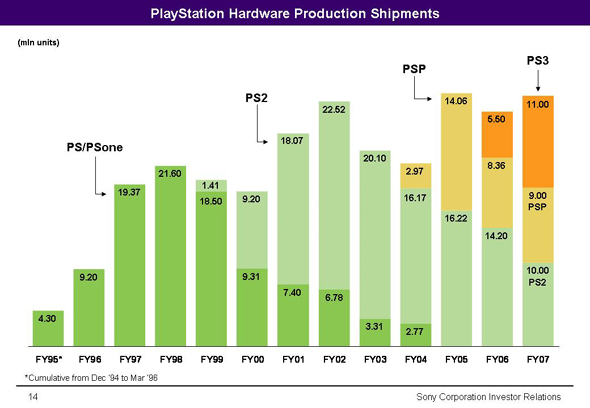Looking at some of these factors and expectations:
- 230mm^2 = smaller side of last gen GPU footprint which ranged from 230-260mm^2; 10% less area than Barts (6870, 255mm^2)
- 2.75B transistors = 230mm^2 Barts style GPU with 80% scaling from 40nm to 28nm
- 700MHz = Less than a Barts 6850 (770MHz, 127W TDP), 6870 (900MHz, 151W), Cayman 6950 (800MHz, 200W), and 6970 (880MHz, 250W). 28nm should bring a solid reduction in power but the increase in transistors is going to scale up power draw. A 6850 is a reasonable 127W considering the 128GB/s of memory bandwidth but a console will need to accommodate the optical drive, HDD, CPU and system memory, etc. With costs (yields/binning) and the RRoD (and YLD) firmly in memory conservative clocks will be likely although the “turbo” features in current GPUs indicates that 700MHz is on the very low end of what should be expected. Comparing a 6790 @ 840MHz 150W max TDP versus a 6850 @ 775MHz 127W max TDP indicates a chip with more functional units and more net performance uses less power than a chip with fewer units at higher frequency.
- 2100GFLOPs = 80% scaling from 40nm to 28nm minus ~ 10% for space reduction (Barts 255mm^2 to our 230mm^2), ~ 15% for redundancy, and ~ 22% reduction in frequency. GFLOPs may also be hit by the new SIMD+Scalar GCN architecture and DX11.1 overheard as well as additional raster pipelines; this may be higher due to many units not needing to scale and shaders are often easier to pack in. e.g. It is unlikely ROPs will scale from 32 to 64, there may even be a reduction to 24 or 16 ROPs on a console GPU, so this space may be utilized for more Shader units.
- 76 TMUs, 52.5GT/s = What is a TMU? I am basing this on Barts style TMUs with 56 TMUs at 35% increase of units. For comparison Cayman has 96. A 6870 (56@900MHz) is 50.4GT/s; 6970 (96@880MHz) is 84.5GT/s.
- 16 ROPs, 11.2GP/s = Or 24. A 6870 is 28.2GP/s (32 ROPs @ 900MHz). When Xenos and RSX shipped they had 8 ROPs when competing PC GPUs had 16. Consoles will have some limiting factors like targeting at most 2GPixel resolutions 1080p (and possibly 2 x 1080 with 3D / 2 player “split” screen) but most games will be 720p 30Hz scaled up to 1080p; there will also be a limiting factor of memory bandwidth. Consoles are about maximizing resources and 32 (or 64) ROPs doesn’t seem like an investment console designers will make when that area could be spent on more shaders.
I think this is on the conservative side. The CPU will be smaller than Xenon IMO (and most certainly CELL) and even this conservative GPU considers the fact more processing will be sent to the GPU
....
Ps- Sony/MS please, one of you, prove me wrong.

